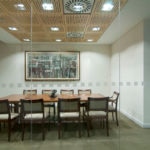Reflection of a century: our Head Office
More than 100 years old, the changes that the building has undergone are a testament to our evolution as a country.
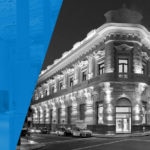
Spacious, eclectic, solemn… if our Casa Central still manages to make quite an impression today, what must’ve it been like when it first opened!
It was built by an impulsive and talented Genovese, who at 27 years of age, after an argument with his father, decided to set sail to River Plate in 1876. He became known as Don Luis Andreoni, the engineer that gifted our city with such spectacular buildings as the Italian Hospital, the Uruguay Club, the French Embassy, and the Central Railway Station. Much to our pride, BBVA’s Head Office was another one of his works.
Mr. Andreoni’s creative strength also led him to found some institutions: He was the pioneer and honorary president of the community of the Italian Hospital played a key role in the discovery of the groundwater in the Minas mountains, among other actions. And he would’ve gone on to expand his already notable list of accomplishments had it not been for his premature death, when he had set out to tackle nothing less than the draining of the Rocha lagoon.
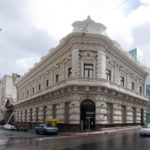
BBVA Uruguay headquarters
The original seat of Banco Territorial del Uruguay and Banco Español, our Head Office embodied both the style of the Belle Epoque and the ideals of honor, respect, perseverance and the drive to succeed that inspired the immigrants that arrived to the country in the late 19th century.
It then hosted the “Taranco Department Store” and was the home of the Taranco family until, as their fortune grew through hard work, they built their palace a few blocks away, which today houses one of the most beautiful museums in the Old City. These were times of cobblestone streets, gutters and horse cars.
Already in the time of the automobile and left-hand traffic, under English influence, the bank that occupied the 25 de Mayo building was also English. British capitals played a key role in the industrialization and modernization of the country, and brought everything from free trade to railways, refrigerators… and soccer.
In a period characterized by the nationalization or centralization of several public services, the Head Office building became and remained the seat of the ANCAP for a long period of time. Before the Avda. del Libertador building was built, it installed all its administration and commercial departments in the lower floors and the upper management in the top floors.
When the ANCAP moved out in 1948, the building was occupied by Banco Español del Uruguay. Since then and to this day, the building has remained the bank’s headquarters, and witnessed the plethora of acquisitions and mergers that led to the creation of BBVA Uruguay.
Renewing itself to adapt to the needs and trends of each age, today it combines the aesthetic beauty, the soundness and the demeanor of its original design, with a modern layout aimed at streamlining processes, boosting functionality and ensuring the comfort of the employees that occupy it every day.
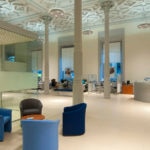
BBVA in Uruguay:
Born in early 2000, as a result of the merger process launched in Spain. BBVA decided to adopt the same name in Uruguay as a starting point to develop a relevant local franchise, combining the solid position in Corporate and Private Banking of its preceding banks – BBV Banco Francés Uruguay S.A. and Banco Exterior de América S.A. Argentaria – and the successful experience of the Group in the Retail business
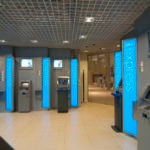
In 2010, BBVA strengthened its presence in Uruguay
BBVA Uruguay signed an agreement with Crédit Agricole S.A. to buy Crédit Uruguay Banco, as a result of which it became one of the largest institution in the country. The operation met the two basic premises of BBVA’s profitable growth strategy: creating shareholder value and making full strategic sense.
The operation still attests to BBVA Group’s confidence in Uruguay, as an economy that is showing great economic soundness, stability and growth potential.

Significant synergies
BBVA Uruguay is a bank with an extensive track record in Uruguay’s financial market and has focused its business both on corporate and private customers, providing significant support to the country’s pivotal agricultural sector.
